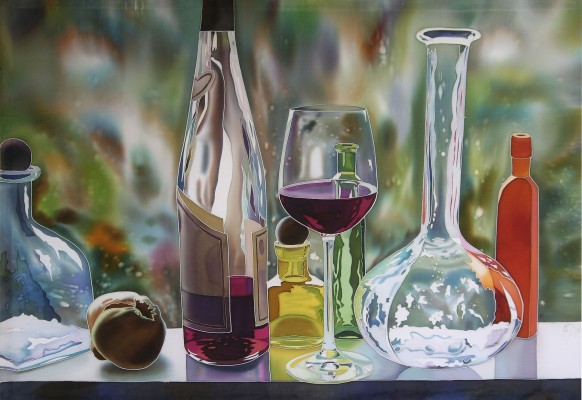What is Silk Painting?
 |
 |
|
| Sissi Siska, Golden Heliconia | Natasha Foucault, My Window with Glass | Hellenne Vermillion, Silk Jar |
You say, “This is all well and good. And thank goodness we don’t have to wade through all 4,660 years of silk history to arrive at today’s silk art ”. The point is to illustrate that while we have become enchanted with this art form more recently, we did not “invent” it. Silk art discovered each of us in unique ways.
It is that personal enchantment that has hooked us all. Some of us started in a beginning class or with a “recipe” type instruction. Some bought a starter kit purchased from the children’s section of the Smithsonian catalog, figuring the children’s version was a good place to start. Others found a demo class at an art fair. There were even a few that were dragged to a class by a friend who insisted that it would be fun.
Our guess is that when our brush touched the silk, we were dazzled by the magic of the silk’s translucence. We were fascinated by the dye’s flow, and the brilliance of the combination. In that moment, we became devoted to silk art. Rumor has it, that there are those who experience these same moments and quickly decide silk art is not for them. However, we know very few.
Since that magic moment, we’ve all strived to find our artist’s voice thus many different silk artistic styles have emerged.
Within this group we have developed techniques, a deep knowledge base regarding: equipment, supply sources, texts, workshops, gatherings etc.
The unique factor that defines this group is that all of us are willing to share our successes as well as our failures. SPIN members live by these words: “The more you share, the richer you become”.